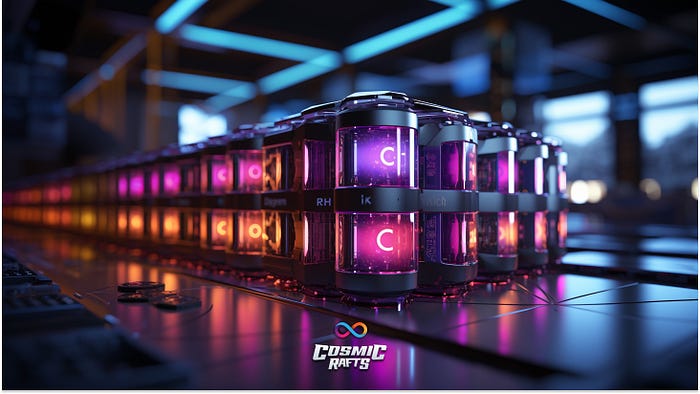
Welcome back to our Weekly Developer Unit series!
In this 17th edition, we’re excited to delve deep into the backbone of our gaming universe — the Web3 system architecture and our approach to creating a DAO in the Metaverse.
In this section, we explore the intricate workings of Token Canisters within our Web3 gaming environment. These canisters are not just storage units for digital assets but are dynamic, programmable components that manage the intricacies of our game’s digital currencies — CXP, Neutrinos, and Spirals.
At the heart of our system are the Core Canisters, each designed to handle specific functionalities:

This is where we manage user authentication and authorization, ensuring secure user sessions and token management.
The epicenter of our gaming universe, containing all the core mechanics and inter-canister communication for validations.
Your digital identity and social networking features are managed here, in sync with the Authentication Canister.

Here, we break down the core functionalities of the Token Canisters, highlighting their roles in transaction management, rule enforcement, and system interoperability. This part is crucial in understanding how these canisters integrate with the overall game architecture.
Token Canisters influence player engagement and the economic balance of the game.

Within the Internet Computer, each token type — CXP, Neutrinos, and Spirals — is managed by its dedicated Token Canister.
This isn’t just about compartmentalization; it’s about creating specialized environments where each token can operate under its unique set of rules and functionalities.

This canister orchestrates all NFT-related operations, from minting to staking, and interfaces with the Game Logic Canister for metadata assignments.


In the blockchain technology, security isn’t just a feature; it’s a foundation. Our architecture here focuses on the robust security measures embedded within the Token Canisters.
It’s about building trust and ensuring that every transaction, every game move, is not only smooth but also secure and compliant with the highest standards.


The DFINITY Foundation has a cost model for cycles and they have provided some example costs for various operations on the Internet Computer.
These are relatively expensive operations because they involve network communication and consensus. Each call could cost on the order of 1 trillion cycles, depending on the payload size.
These are more costly than query calls because they modify the state and require consensus. The cost could be on the order of 10 million to 100 million cycles.
These are cheaper because they do not modify the state and do not require consensus. The cost might be around 1 million cycles per call.
Storing data costs cycles. The cost is based on the size of the data and the duration of storage. For example, storing 1 GB of data for a year might cost on the order of 200 billion cycles.
Here’s the breakdown of the estimated costs for each type of user interaction per session, along with the total costs in cycles and the equivalent in USD:
Equivalent in USD (assuming 1 trillion cycles = 1 USD): $0.000239
So, for each user session, the rough estimated cost is 239 million cycles, which equates to roughly 0.000239 USD

The future-proofing of Cosmicrafts DAO is vital. This concluding part addresses the adaptability and scalability of Canisters, for they remain effective and efficient as Cosmicrafts evolves and grows.
Cosmicrafts DAO architecture might seem complex, but at its core, it’s about creating a stable and functional environment for our players. Each canister we discussed — whether it’s for handling tokens, managing NFTs, or ensuring fair gameplay — is a crucial piece of this larger puzzle.
What’s important in our setup is how these canisters work together. This integration is key to making sure the system runs smoothly.
Looking ahead, we plan to keep refining these systems, making sure they’re as efficient and user-friendly as possible.

Until next time, stay cosmic, and may the Celestial watch over you!
Did you like this post? Tell us
Leave a comment
Log in with your itch.io account to leave a comment.